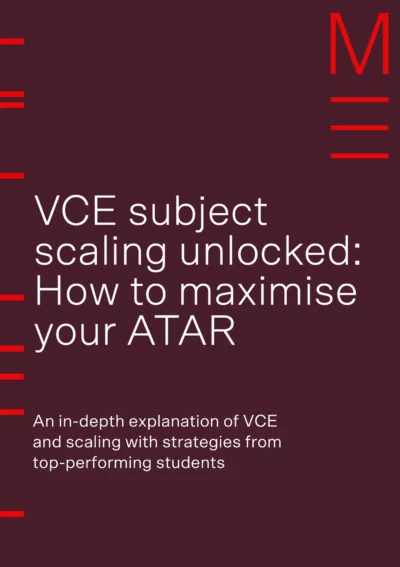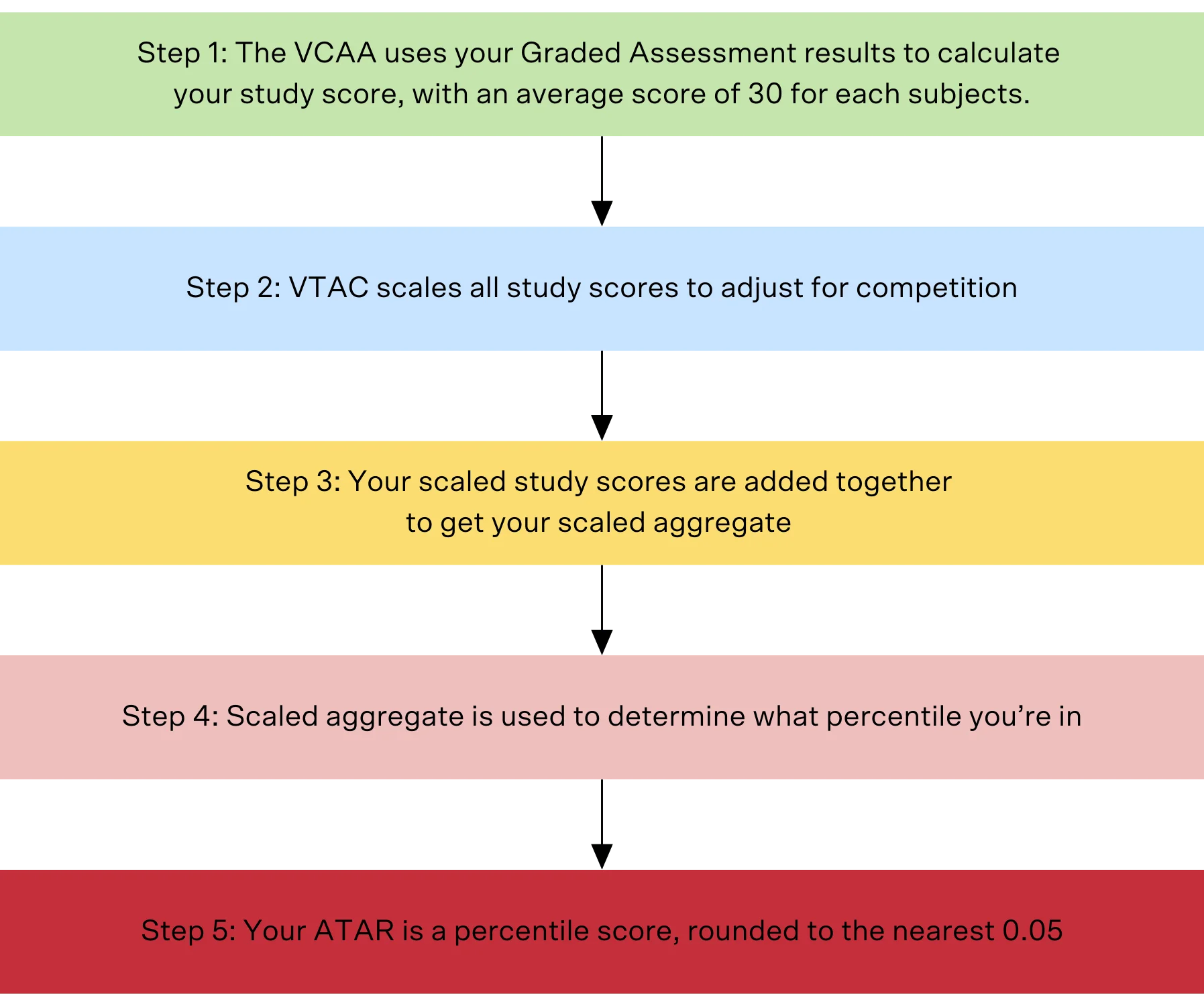Welcome to Matrix Education
To ensure we are showing you the most relevant content, please select your location below.
Select a year to see courses
Learn online or on-campus during the term or school holidays
Learn online or on-campus during the term or school holidays
Learn online or on-campus during the term or school holidays
Learn online or on-campus during the term or school holidays
Learn online or on-campus during the term or school holidays
Learn online or on-campus during the term or school holidays
Learn online or on-campus during the term or school holidays
Get HSC exam ready in just a week
Select a year to see available courses
Science guides to help you get ahead
Science guides to help you get ahead

Our beginner’s guide to ATAR and Scaling gives a clear overview of how your ATAR is calculated from your VCE results. It also offers helpful tips on making the most of scaling to improve your final score.
Here is a list of the common terms that we use in this guide.
| Key Term | Explanation |
| Aggregate | The total of the primary four studies and a maximum of two available increments |
| Scaled score | The adjusted study score after the scaling process |
| General Achievement Test | A written test of general knowledge and skills taken by all students finishing their senior secondary studies. |
| School-assessed coursework (SAC) | A way to check how well a student is doing, using tasks selected by the school based on a designated study design. |
| School-assessed task (SAT) | Checks specific practical skills and knowledge. The VCAA creates these tasks but the teacher assesses them. |
| Statement of Results | A set of documents showing a student’s VCE, VCE VM, or VPC results, and whether they’ve been awarded the relevant certificate. |
First, we need to understand the difference between VCE study scores and an ATAR (Australian Tertiary Admission Rank).
An in-depth explanation of VCE and scaling with strategies from top-performing students. Fill out your details below to get this resource emailed to you. "*" indicates required fields
Free 2025 VCE ATAR & Scaling Guide Download

Free 2025 VCE ATAR & Scaling Guide Download
A VCE study score is a score between 0 and 50, showing how well you performed in a VCE Unit 3-4 sequence, compared to all the other students in the state enrolled in that study. It’s the first step to calculating your ATAR.
The highest study score you can get is 50. Every year, the average study score for all studies is 30. If you score between 23 and 37, it means you’re in the middle range. 38 or higher means you’re in the top 15%.
Take a look at the table below to better understand what a study score is.
| What is a study score? | A rank showing how well you performed in each subject relative to all other students doing the same subject in that year. |
| What does a study score indicate? | Your performance in different subjects |
| What is the maximum study score attainable? | 50/50 |
| Who determines the study score? | VCAA (Victorian Curriculum and Assessment Authority) |
| How is it calculated? | The study score is calculated using the standardised scores of each graded assessment for that study. |
The study score is the combination of the standardised scores of each graded assessment. There are three graded assessments for each study, which may include School-assessed Coursework (SACs), School-assessed Tasks (SATs) and examinations.
Each graded assessment in a study contributes a specific percentage, or weighting, to the final study score.
Once the scores have been standardised, weighted and totalled, your total score is compared with the scores of all other students in that study and then converted to a score out of 50.
To learn more about how study scores are calculated, read Part 1: How study scores are calculated.
You’ll get an ATAR (Australian Tertiary Admission Rank) after you complete the VCE. This is a number between 0.00 and 99.95 that goes up in increments of 0.05. It indicates your rank among all other Year 12 students across Australia. An ATAR is used by universities to select students for their courses.
| What is an ATAR? | Information about how well you performed overall against other students – specifically to help tertiary schools select applicants. |
| What does an ATAR indicate? | Your overall percentile rank compared to the age group in a given year. |
| What is the maximum ATAR attainable? | 99.95 (Top 0.05%) |
| Who determines the ATAR? | VTAC (Victorian Tertiary Admissions Centre) |
| How many students can get a 99.95 ATAR? | 40-50 students |
Remember, ATAR is a rank, not a mark.
If you get a 99.7 ATAR, it means you performed better than 99.7% of your cohort.
Universities use ATARs to rank students for selection into their courses. It’s calculated by universities and released by the VTAC. Visit the VTAC website to view cut-offs for different university courses.
Universities may use an ATAR on its own or with other selection criteria to rank and select applicants for admission into university courses.
Students take different combinations of VCE subjects. So, it’s difficult to compare a student’s overall performance based on their study scores.
For example, how would you compare Oliver’s score of 45 in Specialist Mathematics with his friend who scored 47 in Foundation Mathematics? Who performed better? To make fair comparisons between students’ overall performances, VTAC scales study scores and converts them into an ATAR.
To receive an ATAR, you must complete at least 4 Unit 3–4 sequences, including a VCE English subject, and get a study score for those subjects.
First, your study scores are adjusted and added up to get your aggregate. This aggregate is then placed in order on a percentile scale, which helps convert aggregates into ATARs.
The highest aggregates will get the highest ATAR of 99.95. If your ATAR is below 30.00, it will be listed as ‘less than 30’ on your ATAR statement, but you can see the exact number in the online results services.
The flowchart below outlines the process of determining your ATAR:

We’ll explain each step of the process in the following parts:
© Matrix Education and www.matrix.edu.au, 2023. Unauthorised use and/or duplication of this material without express and written permission from this site’s author and/or owner is strictly prohibited. Excerpts and links may be used, provided that full and clear credit is given to Matrix Education and www.matrix.edu.au with appropriate and specific direction to the original content.